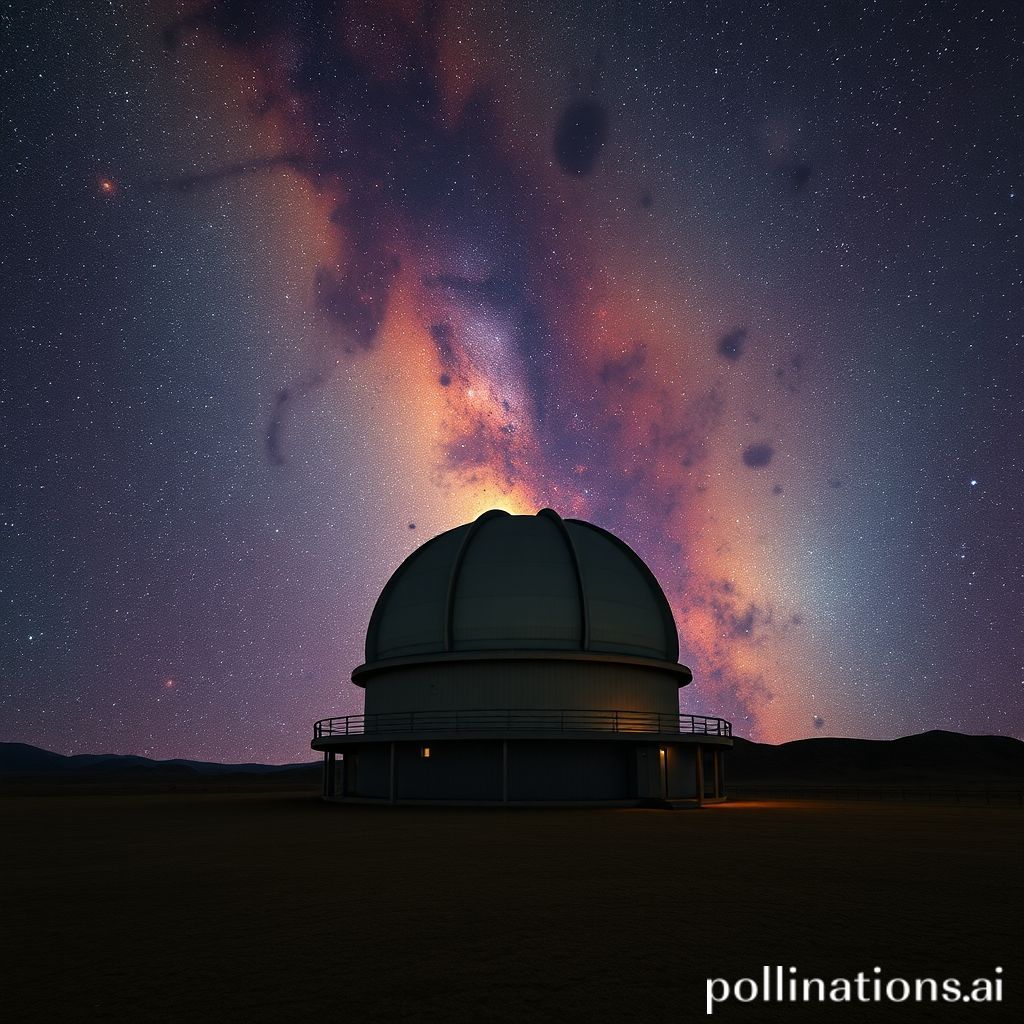
First look: Rubin Observatory’s images reveal universe like never before
First Look: Rubin Observatory s Images Reveal Universe Like Never Before
Hey everyone! Astronomy enthusiasts, science geeks, and curious minds, get ready to have your cosmic socks knocked off! We re on the cusp of a revolution in our understanding of the universe, and it s all thanks to the Vera C Rubin Observatory. The observatory is poised to deliver images and data so detailed and comprehensive, they ll reshape our knowledge of everything from nearby asteroids to the most distant galaxies. Let s dive into what makes this so revolutionary.
A New Eye on the Cosmos
Imagine an observatory so powerful it can capture the entire visible southern sky every few nights. That s precisely what the Rubin Observatory is designed to do. Located atop Cerro Pach n in Chile, its 8.4 meter Simonyi Survey Telescope, equipped with a groundbreaking 3.2 gigapixel camera, will embark on the Legacy Survey of Space and Time (LSST) a ten year project to create the deepest, widest image of the universe ever seen.
Why is this so special?
Traditional telescopes often focus on small patches of the sky, providing incredible detail but missing the bigger picture. Rubin is different. It will survey an enormous area repeatedly, capturing changes and transient events that would otherwise go unnoticed. Think of it as creating a time lapse movie of the entire southern sky. This is revolutionary for several reasons:
Depth: It will see fainter objects than previous surveys, revealing more distant galaxies and fainter asteroids.
Breadth: Its wide field of view allows it to cover vast areas of the sky quickly.
Time Domain: Repeated observations will reveal how objects change over time, such as supernovae exploding, asteroids moving, and stars varying in brightness.
What will Rubin Observatory study?
The LSST has four primary science goals:
Dark Energy and Dark Matter: By mapping the distribution of galaxies across vast distances, the LSST will help us understand the mysterious forces driving the expansion of the universe.
The Changing Night Sky: The survey will discover and track millions of transient events, from supernovae to near Earth asteroids.
The Solar System: LSST will create a comprehensive inventory of objects in our solar system, including asteroids and Kuiper Belt objects. This will vastly improve our understanding of potential threats from near Earth asteroids.
The Milky Way: LSST will create a detailed map of our own galaxy, revealing the distribution of stars and the structure of the Milky Way s halo and disk.
Expected Discoveries
The sheer volume of data generated by the Rubin Observatory is staggering. Over its ten year lifespan, LSST will produce approximately 20 terabytes of data per night. The expected discoveries are equally mind boggling:
Millions of new asteroids: Significantly improving our knowledge of the solar system and potential asteroid impacts.
Detection of thousands of supernovae: Allowing scientists to study the expansion rate of the universe with unprecedented accuracy.
Mapping the structure of dark matter: Providing insights into the invisible scaffolding that holds the universe together.
Revolutionize our understanding of galaxy formation and evolution Revealing how galaxies have grown and changed over cosmic time.
Rubin Observatory vs Hubble Space Telescope:
| Feature | Rubin Observatory | Hubble Space Telescope |
||||
| Primary Mission | Wide field survey | High resolution imaging|
| Field of View| Very wide | Narrow|
| Primary Focus | Time domain astronomy, dark energy, dark matter, solar system inventory | Detailed images of galaxies, nebulae, and planets |
| Location | Ground based (Chile) | Space based |
| Data Volume | Extremely high | Moderate |
While Hubble provides stunning close ups of individual objects, Rubin will provide a vast, dynamic view of the entire sky. They complement each other beautifully.
Early Images: A tantalizing taste
While the full LSST survey is yet to begin, the commissioning process has already produced some incredible images. These early images demonstrate the telescope s extraordinary capabilities and give us a tantalizing glimpse of what s to come. They reveal faint galaxies and intricate details within star clusters, showcasing the power of Rubin s giant camera.
A Future of Discovery
The Vera C Rubin Observatory is more than just a telescope, it s a portal to a new era of astronomical discovery. Its data will be publicly available, allowing astronomers around the world to participate in the exploration of the universe. It promises to revolutionize our understanding of the cosmos and inspire generations to come. I am personally thrilled about the potential insights into dark matter and dark energy. Understanding these fundamental components of the universe is one of the biggest challenges in modern physics, and I believe Rubin Observatory will be instrumental in unlocking their secrets. It's a truly exciting time to be alive and witness such monumental leaps in our understanding of the universe!

0 Comments:
Post a Comment